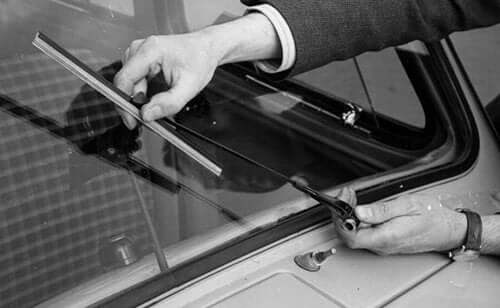As you cruise down the highway on a rainy day, you probably don't give much thought to the small but indispensable device working tirelessly to keep your windshield clear - the wiper blade. These seemingly simple tools have a fascinating history, evolving over the years from manual contraptions to the modern, efficient wiper blades we know today.
Early Days: The Invention of the Windshield Wiper
Before we delve into the history of wiper blades, let's take a trip back to the late 19th century when automobiles were still in their infancy. Imagine driving down muddy, rain-soaked roads without a wiper system - not the safest scenario, right?
The credit for inventing the first practical windshield wiper system goes to Mary Anderson, an Alabama native. In 1903, she patented a manually operated lever inside the car that could move a rubber blade horizontally across the windshield to clear rain and snow. Her invention was a crucial step toward improving visibility in inclement weather conditions.
Electric Windshield Wipers: A Game-Changing Invention
The early 20th century brought further innovations in windshield wiper technology. In 1917, Charlotte Bridgwood introduced the first automatic windshield wiper, which was powered by an electric motor. However, these early electric wipers were far from the efficient wiper blades we use today. They often had one-speed settings, limited coverage, and could be quite noisy.
It wasn't until the 1950s and 1960s that wiper blade technology saw significant advancements. Robert Kearns, who is often credited with inventing the intermittent windshield wiper, developed a system that allowed wiper blades to pause and wipe at intervals. This innovation greatly improved driver comfort and reduced wear on the wiper blades.
The Transition to Modern Wiper Blades
In the latter half of the 20th century, windshield wiper technology continued to evolve. With the introduction of the first beam-style wiper blades in the 1970s, the transition from traditional wipers to modern wiper blades began.
The conventional wiper blades, featuring a metal frame, were the norm for many years. However, these had their drawbacks, including uneven pressure distribution, streaking, and noise. Modern beam-style wiper blades, characterized by their one-piece design without metal frames, resolved many of these issues. They provided consistent pressure across the windshield, reduced streaking, and offered improved performance in various weather conditions.
Today, wiper blades come in a variety of materials, such as rubber and silicone, and boast advanced technologies, like built-in water repellency and smart sensors. They have become an integral part of automotive safety and convenience.
A Clear Path to the Future
The journey from the manually operated windshield wiper lever to the advanced wiper blades we have today has been a remarkable one. These unassuming devices have come a long way in ensuring driver safety and comfort, allowing us to navigate through the toughest weather conditions with confidence. As technology continues to advance, we can look forward to even more innovative developments in wiper blade design, making our journeys on the road safer and more enjoyable.


